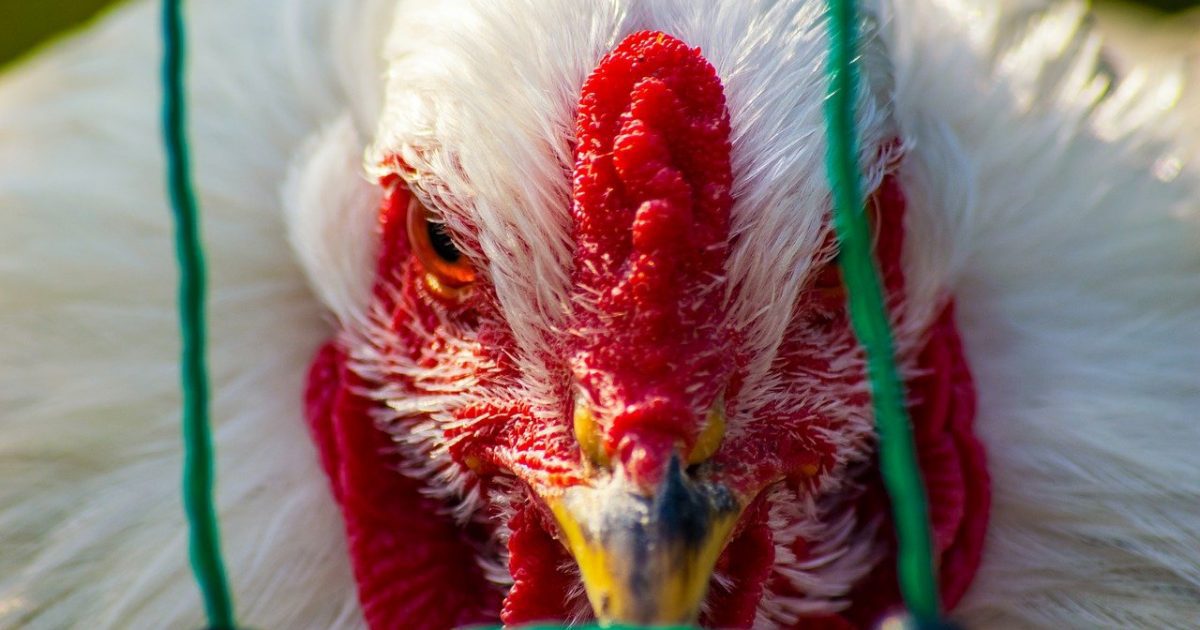After COVID-19, does anyone seriously trust the information coming from the CCP?
With COVID-19 still part of daily lives across the globe, there are reports of another virus coming out of China.
This time it’s a strain of bird flu called H10N3.
And a 41-year-old man from the eastern province of Jiangsu is believed to be the world’s first case of H10N3.
China’s National Health Commission reports that risk of large-scale transmission is low.
But look what happened last time when the CCP was trusted to share transparent information about a new virus.
COVID-19 happened and it wreaked havoc on the world.
Here’s the latest:
China confirms first human case of H10N3 bird flu https://t.co/qkCTlwW9Ly pic.twitter.com/4mbNNOUiHl
— New York Post (@nypost) June 1, 2021
Here we go again
China reports human case of H10N3 bird flu, a possible first https://t.co/zmZ3ODrnio
— Jack Poso 🇺🇸 (@JackPosobiec) June 1, 2021
JUST IN – White House official: CDC is closely tracking H10N3 Bird flu case in China.
— Insider Paper (@TheInsiderPaper) June 1, 2021
There may be a new form of bird flu in humans. https://t.co/HR2NtoUsZo
— ABC12WJRT (@ABC12WJRT) June 1, 2021
A 41-year-old man in China's eastern province of Jiangsu has been confirmed as the first human case of infection with the H10N3 strain of bird flu, China's National Health Commission (NHC) said on Tuesday. https://t.co/G2TJhSZFSY
— Reuters Health (@Reuters_Health) June 1, 2021
NEW THIS MORNING: The National Health Commission said infection is “accidental cross-species transmission" and the "risk of large-scale transmission is low.” https://t.co/Lv8uC6wZKx
— KIII 3 News (@kiii3news) June 1, 2021
https://twitter.com/XNewsAlerts/status/1399725134194356230
Experts have advised people to try to avoid direct contact with live birds.
All you need to knowhttps://t.co/hWclBRjJR9
— Hindustan Times (@htTweets) June 1, 2021
From the AP:
A man in eastern China has contracted what might be the world’s first human case of the H10N3 strain of bird flu, but the risk of large-scale spread is low, the government said Tuesday.
The 41-year-old man in Jiangsu province, northwest of Shanghai, was hospitalized April 28 and is in stable condition, the National Health Commission said on its website.
No human case of H10N3 has been reported elsewhere, the commission said.
“This infection is an accidental cross-species transmission,” its statement said. “The risk of large-scale transmission is low.”
Reuters also reported:
The man, a resident of the city of Zhenjiang, was hospitalised on April 28 after developing a fever and other symptoms, the NHC said in a statement.
He was diagnosed as having the H10N3 avian influenza virus on May 28, it said, but did not give details on how the man had been infected with the virus.
The man was stable and ready to be discharged from hospital. Medical observation of his close contacts had not found any other cases.
H10N3 is a low pathogenic, or relatively less severe, strain of the virus in poultry and the risk of it spreading on a large scale was very low, the NHC added.
The strain is “not a very common virus,” said Filip Claes, regional laboratory coordinator of the Food and Agriculture Organization’s Emergency Centre for Transboundary Animal Diseases at the Regional Office for Asia and the Pacific.
Only around 160 isolates of the virus were reported in the 40 years to 2018, mostly in wild birds or waterfowl in Asia and some limited parts of North America, and none had been detected in chickens so far, he added.
Analysing the genetic data of the virus will be necessary to determine whether it resembles older viruses or if it is a novel mix of different viruses, Claes said.
Many different strains of avian influenza are present in China and some sporadically infect people, usually those working with poultry. There have been no significant numbers of human infections with bird flu since the H7N9 strain killed around 300 people during 2016-2017.
Tell us your thoughts below about this new virus.



Join the conversation!
Please share your thoughts about this article below. We value your opinions, and would love to see you add to the discussion!